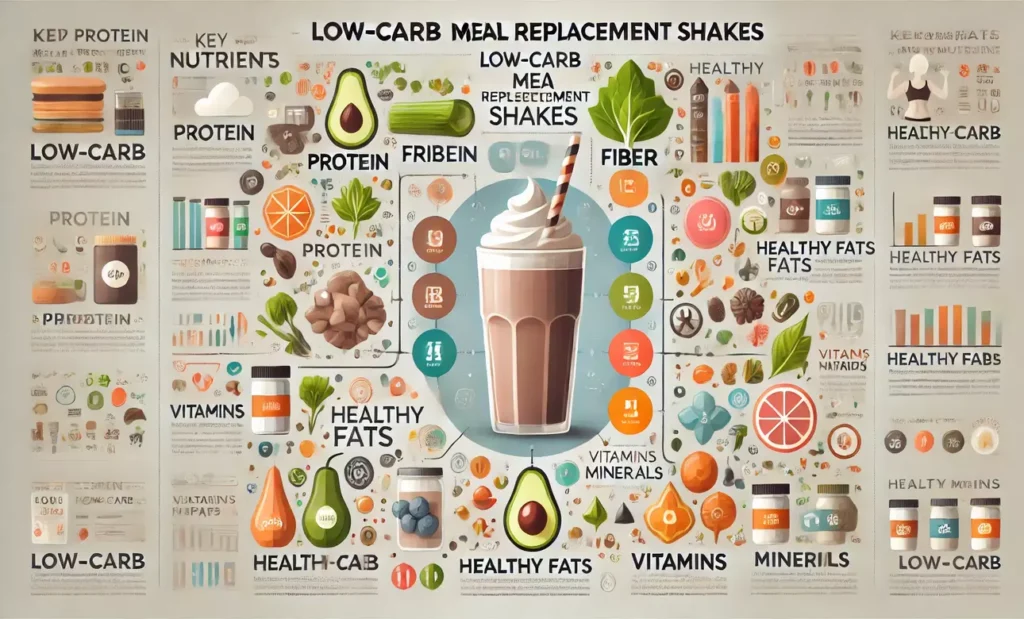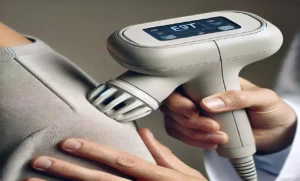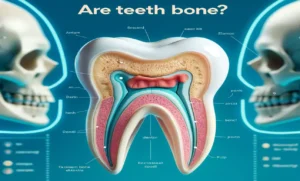Best Low-Carb Meal Replacement Shakes

Meal replacement shakes are a convenient way to get the nutrition you need, especially when you’re on the go. For those following a low-carb diet, finding the right meal replacement shake can be crucial for maintaining ketosis and managing weight. This article will guide you through the best low-carb meal replacement shakes available, their benefits, and how to incorporate them into your diet.
- Benefits of Low-Carb Meal Replacement Shakes
- Key Nutrients in Best Low-Carb Meal Replacement Shakes
- Choosing the Right Low-Carb Meal Replacement Shake
- Top Low-Carb Meal Replacement Shakes
- Homemade Low Carb Meal Replacement Shakes
- How to Incorporate Meal Replacement Shakes into Your Diet
- Potential Side Effects and Considerations
- FAQs About Low-Carb Meal Replacement Shakes
Benefits of Low-Carb Meal Replacement Shakes
Weight Management
Low-carb meal replacement shakes are an effective tool for weight management. They help control your calorie intake while providing essential nutrients, making them a suitable weight-loss option. These shakes are designed to keep you full and satisfied, reducing the temptation to snack on unhealthy foods. Replacing one or two meals with a low-carb shake can create a calorie deficit necessary for weight loss. The high protein content in many of these shakes promotes satiety. It helps maintain muscle mass during weight loss, which is crucial for a healthy metabolism.
Blood Sugar Control
For people with diabetes or insulin resistance, low-carb meal replacement shakes can be particularly beneficial. These shakes help stabilize blood sugar levels by preventing the spikes that often occur with high-carbohydrate meals. The low carbohydrate content minimizes the need for insulin, helping to maintain a more consistent blood sugar level throughout the day. This can lead to better overall health and reduced complications associated with diabetes. Additionally, the fiber content in these shakes slows down the absorption of sugars, further aiding in blood sugar control (Sleep Foundation) (Cleveland Clinic).
Convenience and Nutritional Balance
One of the biggest advantages of low-carb meal replacement shakes is convenience. They offer a quick and easy way to consume a balanced meal, especially for busy individuals who might need more time to prepare nutritious meals. These shakes are formulated to provide a good balance of essential nutrients, including proteins, vitamins, and minerals, ensuring adequate nutrition even on the go. This convenience makes it easier to stick to a low-carb diet and maintain a healthy lifestyle despite a hectic schedule. Furthermore, many low-carb shakes are fortified with additional nutrients to support overall health, making them a reliable option for meal replacement.
Low-carb meal replacement shakes are a versatile and practical option for weight management, blood sugar control, and nutritional balance. They provide the necessary nutrients conveniently, making it easier to adhere to a healthy diet and achieve your health goals.
Key Nutrients in Best Low-Carb Meal Replacement Shakes
Protein
Protein is a critical nutrient for muscle repair and growth. High-protein meal replacement shakes help maintain muscle mass, especially when cutting calories. Muscle preservation during weight loss is essential because muscle tissue burns more calories than fat, even at rest, which supports a healthy metabolism. Whey, casein, and plant-based proteins like pea or soy are commonly used in these shakes, offering complete amino acid profiles to support muscle health.
Fiber
Fiber aids digestion and promotes satiety, helping you feel full longer and reducing the temptation to snack between meals. Many low-carb shakes include fiber to support digestive health and enhance the feeling of fullness. Soluble fiber, in particular, can help regulate blood sugar levels by slowing down the absorption of sugars into the bloodstream, which is beneficial for maintaining stable energy levels and preventing insulin spikes.
Essential Vitamins and Minerals
A good meal replacement shake should provide essential vitamins and minerals to ensure you get all vital nutrients. These micronutrients are crucial for various bodily functions, including immune support, bone health, and energy production. Vitamins such as A, C, D, E, and B-complex, along with minerals like calcium, magnesium, potassium, and iron, are often included to ensure a well-rounded nutritional profile.
Healthy Fats
Healthy fats are essential for maintaining energy levels and supporting overall health. They are vital in hormone production, brain function, and nutrient absorption. Look for shakes that include sources of omega-3 and omega-6 fatty acids, such as flaxseed oil, chia seeds, or fish oil. These fats provide long-lasting energy and anti-inflammatory properties that support heart health and cognitive function.
The key nutrients in low carb meal replacement shakes—protein, fiber, essential vitamins and minerals, and healthy fats—work together to support overall health, promote satiety, and maintain energy levels, making these shakes a practical and nutritious option for meal replacement.
Choosing the Right Low-Carb Meal Replacement Shake
Reading Labels
Always check the nutrition label to ensure the shake meets your dietary needs. Look for low carbohydrate content, high protein, and minimal added sugars.
Considering Macronutrient Ratios
A good low-carb shake should have a balanced ratio of macronutrients, focusing on high protein and healthy fats.
Avoiding Hidden Sugars
Be wary of hidden sugars that can increase the shake’s carbohydrate content. Ingredients like high fructose corn syrup, honey, and agave can add unwanted carbs.
Top Low-Carb Meal Replacement Shakes
Keto Chow
Keto Chow is specifically formulated for ketogenic diets, offering a high-fat, moderate-protein, and very low carbohydrate profile. This shake is ideal for those following a keto diet, providing the necessary macronutrients to maintain ketosis. Keto Chow comes in various flavors and allows for customization by adding your preferred fat sources, such as heavy cream or avocado oil, making it versatile for different dietary preferences.
Ample K
Ample K is another excellent option for keto enthusiasts. It features a balanced blend of macronutrients with organic, real-food ingredients. Ample K is designed to support ketosis with high-quality fats from coconut and macadamia nuts, moderate protein from grass-fed whey and collagen, and minimal carbs. It also includes probiotics and fiber to support digestive health, making it a comprehensive meal replacement option.
SlimFast Keto
SlimFast Keto shakes are readily available and offer a convenient, low-carb meal replacement option. They come in various flavors, such as Creamy Chocolate and Vanilla Cream, catering to different tastes. They are formulated with high-quality fats, moderate protein, and low carbs, designed to help you stay in ketosis while providing a satisfying meal alternative.
Atkins Shakes
Atkins Shakes are well-known in the low-carb community and provide a reliable, easy-to-find option with a good balance of nutrients. These shakes are formulated to support low-carb lifestyles with high protein, low sugars, and essential vitamins and minerals. Available in flavors like Milk Chocolate Delight and Strawberry, Atkins Shakes offers taste and nutrition for low-carb diets.
Garden of Life Keto Fit
Garden of Life Keto Fit shakes are organic and include high-quality ingredients to support ketosis and overall health. These shakes are rich in healthy fats from coconut MCTs, moderate in protein, and low in carbohydrates. They also contain organic coffeeberry for a natural caffeine boost, probiotics, and enzymes to aid digestion, making them a holistic meal replacement choice.
These top low-carb meal replacement shakes—Keto Chow, Ample K, SlimFast Keto, Atkins Shakes, and Garden of Life Keto Fit—provide varied options for those seeking to maintain a low-carb or ketogenic diet, ensuring you can find a shake that meets your nutritional needs and taste preferences.
Homemade Low Carb Meal Replacement Shakes
Benefits of Homemade Shakes
Making your own low-carb meal replacement shakes at home allows for complete control over the ingredients, ensuring you meet your specific dietary needs and taste preferences. You can avoid additives and preservatives often found in store-bought options and tailor the nutritional content to support your health goals. Homemade shakes can be adjusted for macro and micronutrient content, catering to dietary requirements such as keto, paleo, or low carb.
Basic Recipe and Ingredients
A basic low-carb shake recipe might include:
- Unsweetened Almond Milk: A low-carb base that’s creamy and dairy-free.
- Protein Powder: Choose a high-quality, low-carb protein powder, such as whey, casein, or plant-based options.
- Handful of Spinach: Adds fiber, vitamins, and minerals without significantly impacting carb content.
- Tablespoon of Chia Seeds: Provides healthy fats, fiber, and omega-3 fatty acids.
Customizing to Your Needs
You can easily customize homemade shakes to meet your specific nutritional needs. For instance, adding half an avocado can introduce healthier fats and create a creamier texture. Including berries like strawberries or blueberries can add flavor and antioxidants while keeping the carb count low. Other options include:
- MCT Oil: For an extra boost of healthy fats that support ketosis.
- Greek Yogurt: This is for additional protein and a creamy texture.
- Cocoa Powder: For a chocolate flavor without added sugar.
Customizing your homemade low-carb meal replacement shakes ensures they are nutritious and enjoyable to consume, supporting your dietary needs and taste preferences. This flexibility allows you to create a variety of shakes that keep your diet interesting and aligned with your health goals.
How to Incorporate Meal Replacement Shakes into Your Diet
Replacing Meals vs. Snacks
When incorporating meal replacement shakes into your diet, deciding whether to use them as a full meal replacement or supplement is essential. Replacing a meal with a shake is often more suitable for losing weight. A well-balanced shake can provide all the necessary nutrients while controlling calorie intake, making it easier to create a calorie deficit for weight loss. On the other hand, using meal replacement shakes as snacks can help maintain energy levels throughout the day. This approach benefits those with high energy demands or who need a quick and nutritious option between meals.
Best Times to Consume
The timing of consuming meal replacement shakes can greatly affect their benefits. Many people find breakfast or lunch to be the most convenient time to have a shake. Starting the day with a shake can provide sustained energy and prevent mid-morning hunger, setting a healthy tone for the rest of the day. Similarly, having a shake for lunch can be a quick and nutritious option, especially for those with busy schedules who may need more time to prepare a full meal.
Pairing with Other Low Carb Foods
For added nutrition and to enhance satiety, consider pairing your meal replacement shake with other low-carb foods. For example, a handful of nuts can add healthy fats and protein, a boiled egg provides additional protein and nutrients, and a small salad can increase fiber intake and add volume to your meal. These pairings help ensure you’re getting a balanced intake of nutrients and make the meal more satisfying and enjoyable.
Including meal replacement shakes in your diet can be flexible and tailored to your needs. Whether replacing meals, supplementing snacks, and choosing the right times and pairings can help maximize the benefits and support your overall health goals.
Potential Side Effects and Considerations
Digestive Issues
When first incorporating meal replacement shakes into their diet, some people may experience digestive issues such as bloating, gas, or stomach discomfort. These issues can often be mitigated by gradually introducing the shakes into their diet, allowing their digestive system to adjust. Starting with small portions and gradually increasing the amount can help their body adapt more comfortably to the new routine.
Nutrient Deficiencies
While meal replacement shakes can provide essential nutrients, they should not be used to replace all meals long-term. Solely relying on shakes can lead to nutrient deficiencies, as whole foods offer a wide range of vitamins, minerals, and other beneficial compounds that shakes may lack. To meet all your nutritional needs, it’s important to ensure a varied diet that includes plenty of whole foods such as fruits, vegetables, lean proteins, and whole grains.
Consulting with a Healthcare Provider
It’s crucial to consult with a healthcare provider before making significant changes to your diet, especially if you have underlying health conditions. A healthcare professional can provide personalized advice based on your health status and dietary needs, helping you avoid potential risks and ensuring that meal replacement shakes suit you. This is particularly important for individuals with diabetes, kidney disease, or gastrointestinal disorders, where dietary adjustments may require careful planning and monitoring.
By being aware of these potential side effects and considerations, you can better incorporate meal replacement shakes into your diet in a healthy and balanced manner.
FAQs About Low-Carb Meal Replacement Shakes
What makes a shake low carb?
Low-carb shakes typically contain minimal sugars and carbohydrates, focusing on high protein and healthy fats.
Can I use meal replacement shakes for long-term dieting?
Yes, but it’s important also to include whole foods in your diet to ensure you’re getting a wide range of nutrients.
Are low-carb shakes safe for people with diabetes?
Many low-carb shakes are safe for diabetics, but it’s best to consult with a healthcare provider.
How do I avoid hunger with meal replacement shakes?
Ensure your shake includes enough protein and fiber to keep you full. Pairing it with a small snack can also help.
Can I exercise while on a meal replacement shake diet?
You can exercise, but ensure your shake provides enough energy and nutrients to support your activity level.
What are the best flavors available?
Popular flavors include chocolate, vanilla, and strawberry, but many brands offer many options.
How do meal replacement shakes compare to whole foods?
Shakes can be convenient and balanced but should complement or partially replace whole foods.
Can I make a low-carb shake at home?
Yes, homemade shakes allow you to control ingredients and tailor them to your needs.
What should I look for in a good low-carb meal replacement shake?
Look for high protein, low carbs, healthy fats, and essential vitamins and minerals.
Are there any artificial ingredients in these shakes?
Some shakes may contain artificial ingredients. Reading labels carefully can help you choose cleaner options.






